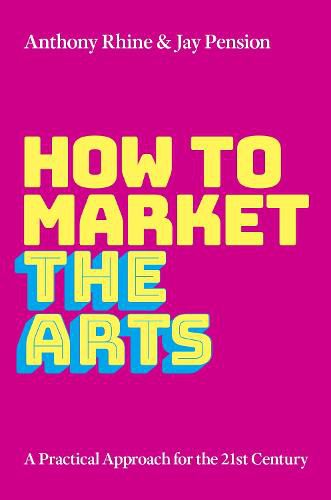Readings Newsletter
Become a Readings Member to make your shopping experience even easier.
Sign in or sign up for free!
You’re not far away from qualifying for FREE standard shipping within Australia
You’ve qualified for FREE standard shipping within Australia
The cart is loading…






Conventional business marketing often suggests that the primary function of business is to market a product in order to maximize efficiency and profit. In How to Market the Arts: A Practical Approach for the 21st Century, expert authors Anthony Rhine and Jay Pension propose a new paradigm to better explain how nonprofit arts marketing can and should work.
How to Market the Arts provides a history of both nonprofit arts and critical marketing concepts to show how standard methods of marketing are ill-suited for the nonprofit arts industry. Through visual models and case studies of several arts organizations, the book offers instead a practical look at how this industry might adopt more holistic marketing strategies that better reflect their true function which is often to serve communities over persuading consumers. Rhine and Pension offer a theoretical framework for reconsidering the nature of nonprofit arts marking, as well as useful steps an organization might take to increase its value to a community and develop a broader audience base.
$9.00 standard shipping within Australia
FREE standard shipping within Australia for orders over $100.00
Express & International shipping calculated at checkout
Conventional business marketing often suggests that the primary function of business is to market a product in order to maximize efficiency and profit. In How to Market the Arts: A Practical Approach for the 21st Century, expert authors Anthony Rhine and Jay Pension propose a new paradigm to better explain how nonprofit arts marketing can and should work.
How to Market the Arts provides a history of both nonprofit arts and critical marketing concepts to show how standard methods of marketing are ill-suited for the nonprofit arts industry. Through visual models and case studies of several arts organizations, the book offers instead a practical look at how this industry might adopt more holistic marketing strategies that better reflect their true function which is often to serve communities over persuading consumers. Rhine and Pension offer a theoretical framework for reconsidering the nature of nonprofit arts marking, as well as useful steps an organization might take to increase its value to a community and develop a broader audience base.